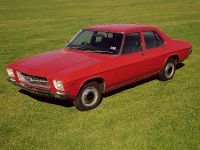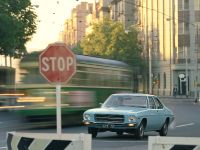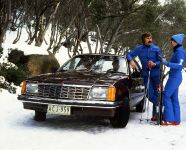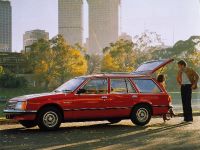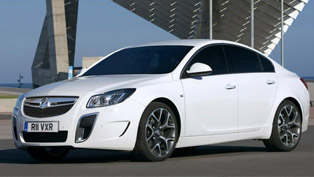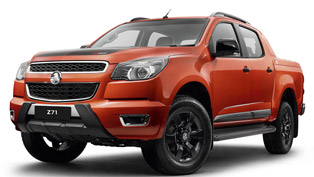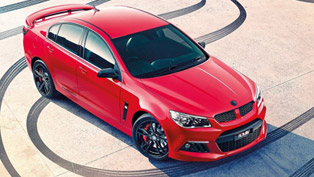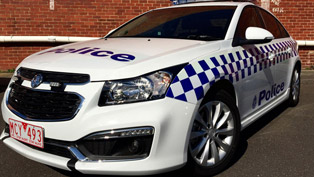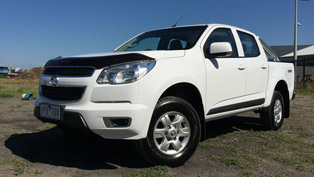All Change in the Seventies 1971-1978 Holden Reinvents Itself in an Evolving World
This year, Holden will commemorate the 60th anniversary of Australia's own car, the 48-215. In the countdown to this significant anniversary, Holden is revisiting the iconic models that cemented its place in Australian history.
The 1970s saw continued success for Holden, launching a succession of landmark vehicles, and in 1972, Holden reached a new milestone when it exported its 250,000th vehicle.
After 25 straight years of market leadership, Holden embarked on a major change of direction with the launch of the VB Commodore in 1978. A smaller car than its predecessor, the Commodore quickly established itself as Australia's top-selling car, fending off increased competition from imported vehicles.
Holden HQ – 1971-1974
In a time when Watergate and the women's movement were making headlines around the world, on the streets of Australia, the HQ Holden became the national automotive icon of the decade.
Boasting a huge selection of distinct model variants – 18 in all, plus a number of limited edition specials – the HQ Holden was the biggest-selling Holden ever. Over a three-year production period, total sales of the much-loved model reached nearly half a million, ensuring Holden's title as Australia's number one car manufacturer of the period remained beyond challenge, despite encroaching Japanese imports.
The all-new HQ was a smoother, safe, more elegant car than any previous Holden. Praised for its advanced features and individual styling, it represented a more sophisticated design direction while delivering the rugged durability and family-size roominess expected by Holden buyers.
Monocoque construction and all-new four-wheel coil spring suspension provided superior ride and handling. Power was delivered through a choice of six and eight-cylinder engines. Carried over from the previous model Holden (the HG), HQ's six-cylinder powerplants were given a longer stroke, increasing respective capacities to 2.84-litres and 3.3-litres. Two versions of the locally-built V8 were offered – a 4.2-litre ‘253' and a 5-litre ‘308' - in addition to an imported 5.74-litre ‘350' Chevrolet engine.
Industry-leading initiatives in automotive safety – a major focus of today's Holden range – featured in the HQ.
Thick padding was incorporated into the dashboard, door curvature and design gave increased side impact protection, rear seats were reinforced and the fuel tank was mounted ahead of the rear axle.
For the first time, the Holden model range included a long wheelbase derivative. The original Holden Statesman, with a 26-centimetre length advantage over other HQ sedans, featured a plush, roomy interior and two trim levels: Custom and DeVille. Also new to the range was the sporty ‘SS', a four-door V8 with four-speed, console-mounted manual transmission, power front brakes, bucket seats, GTS instruments, steering wheel and steel sports wheels. This HQ was a precursor to the hugely popular four-door HQ Monaro GTS sedan, released in 1973.
The HQ range marked the debut of Holden's first cab/chassis truck. Dubbed the ‘One Tonner' for its payload capacity, it could be fitted with a number of factory or after market tray-backs, tip-backs or camper bodies.
Rounding out the range were the Belmont, Kingswood and Premier sedans and wagons; Monaro Coupe, GTS Coupe and LS Coupe; utility and panel van commercials. Special limited edition models included a Vacationer sedan and a Silver Anniversary Holden Premier.
HQ Facts
Base price at introduction: $2,730 ( Belmont sedan); $4,630 (Monaro V8 ‘350'); $4,660 (Statesman DeVille)
Total number built: 485,650
Models: Belmont sedan, station wagon, panel van and utility; Kingswood sedan, station wagon and utility; Sandman panel van Sandman utility; SS sedan; Premier sedan and station wagon; cab chassis; Monaro coupe, Monaro GTS coupe, Monaro GTS 350 coupe, Monaro LS (Luxury Sports) coupe, Monaro GTS sedan; Statesman sedan, Statesman DeVille sedan.
Engines: 2.84-litre six-cylinder ‘173', 3.3-litre six-cylinder ‘202', 4.2-litre V8 ‘253', 5-litre V8 ‘308' and 5.74-litre V8 ‘350'.
Transmissions: Three-speed manual, four-speed manual, three-speed Trimatic automatic and three-speed Turbohydramatic 400 automatic (only with ‘350' V8).
Dimensions (basic sedan): Length – 4762mm
Width – 1880mm
Wheelbase – 2819mm
Also in 1971-74:
The first long wheelbase luxury Holden derivative, the Statesman, goes on sale in six-cylinder and eight-cylinder versions.
The first car-based Holden ‘Cab and Chassis' light truck is announced as part of the HQ range.
Holden produces its 100,000th Trimatic transmission. These have been produced in 18 versions and 15,000 units have been exported.
The LJ Torana, the third small Holden, is launched. Between 1972 and 1974, 81,453 are built.
Peter Brock tastes his first victory in the annual Bathurst enduro, winning the Hardie-Ferodo 500 in a six-cylinder Torana LJ GTR XU-1.
Holden celebrates 25 years of Holden manufacture in Australia in 1973.
VB Commodore – 1978-1980
By coincidence, it was just as Motown band The Commodores began hitting the Australian music charts that Holden redefined the local passenger car market with a car of the same name.
Commodore still holds its place as one of Australia's most loved cars, but when the VB Commodore was launched, it signified a major change in direction at Holden.
The popularity of smaller Japanese imports and the fuel crises of the 1970s influenced Holden's decision to market a car that was significantly smaller and lighter than its predecessors. The VB Commodore benefited from an investment of more than $110 million in development and combined modern German body design with an Australian engine and local mechanical components.
The newcomer drew rave reviews from the motoring press, and was awarded the coveted Wheels Car of the Year award in 1978.
Significant aspects of the Commodore's design included MacPherson strut front suspension modified to cope with harsh Australian road conditions, the use of rack and pinion steering, a four-speed manual gearbox as standard and generous equipment levels, beginning with the base model.
Powered by a 2.85-litre six-cylinder engine, the cheapest variant offered front power-assisted brakes, carpets, front bucket seats, clock, radio and headed rear screen. The more highly specified VB Commodore SL added a 3.3-litre six-cylinder powerplant, T-bar automatic transmission, cloth seat trim, height adjustable driver's seat, rear centre armrest, retractable rear seat belts, intermittent windscreen wipers and left hand remote-operated mirror.
The top-of-the range SL/E became Holden's showpiece and created a new benchmark for locally produced luxury sedans.
Priced at only $10,513, the VB SL/E featured a powerful 4.2-litre V8 teamed with T-bar automatic transmission, four-wheel disc brakes, power steering, 15x6 alloy wheels, integrated air-conditioning, AM/FM radio cassette player and a full range of convenience items including headlight wipers and washers.
Wagon versions of the base VB Commodore and VB Commodore SL were introduced in 1979 and featured a large cargo area and easy access one-piece lift-up tailgate.
VB Facts
Base price at introduction: $6,513 (base six-cylinder sedan); $7,813 (SL six-cylinder sedan); $10,513 (SL/E six-cylinder sedan)
Total number built: 95,906
Models: Commodore sedan and station wagon, Commodore SL sedan and station wagon, SL/E Commodore sedan.
Engines: 2.85-litre six-cylinder, 3.3-litre six-cylinder, 4.2-litre V8 5-litre V8.
Transmissions: Four-speed manual, three-speed Trimatic automatic and three-speed Turbohydramatic 350/400 automatic.
Dimensions (basic sedan): Length – 4705mm
Width – 1722mm
Wheelbase – 2668mm
Also in 1978-1979:
Holden celebrates its 25th straight year of overall market leadership.
The Gemini TD is announced with sedan, coupe, three-door station wagon and panel van variants. During the model's life, 42,396 TDs are sold.
The Holden production tally (at release of VB Commodore) stands at 3.6 million.
A $300 million Holden expansion program, which includes a new engine plant for Fishermans Bend, is announced.
The last Torana is sold after 12 years of production, six series of models and more than 390,000 sales
